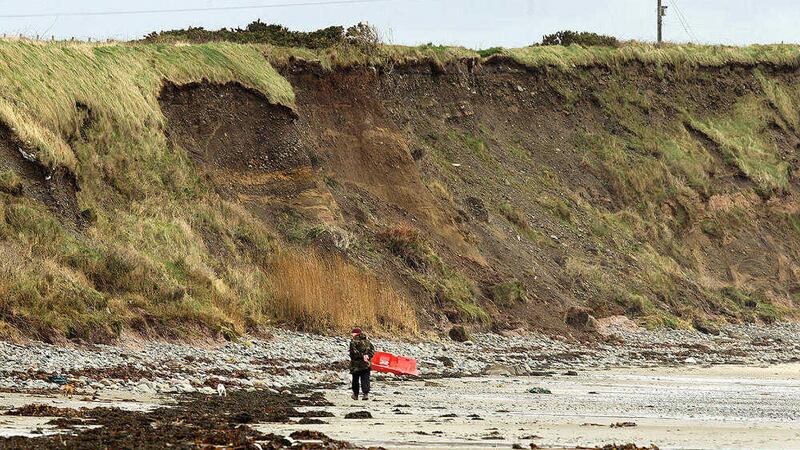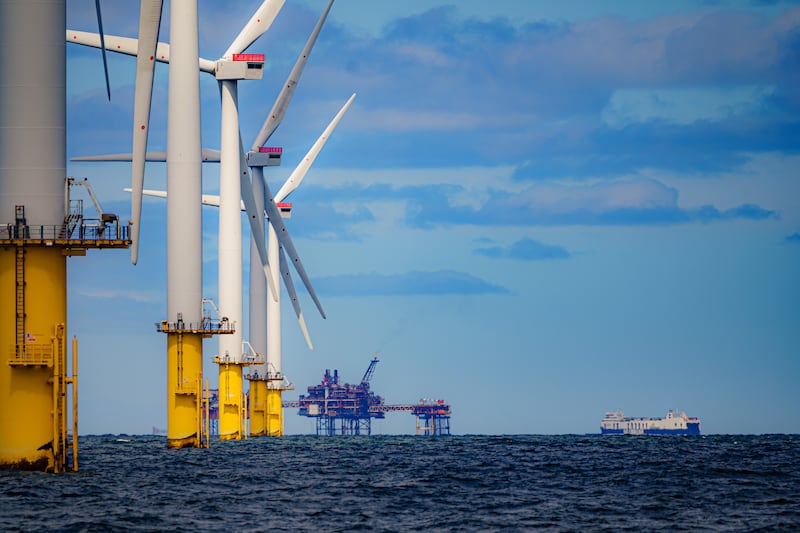CLUSTERS of bulbous wrack seaweed and blades of kelp twist into knotted bundles along the beach at Ballyhornan, wrapping around the decaying body of a seal hurled from the belly of the Irish Sea by the previous night’s storm.
By the next tide it will be gone again, sucked back into the waters off the Co Down coast to be eaten by the smaller fish it once preyed upon.
A group of meditating oystercatchers, some of them balancing on one leg, become agitated as I get closer, shuffling and hopping along the sand, a startled peep rising to a high-pitched chorus as, with one mind, they take off and circle above.
Further along the beach, when it gets warmer, redshanks can often be seen, but they are wintering it out somewhere else for now and their territory is abandoned, apart from the occasional stray wagtail or strutting crow.
In the spring sand martins will nest in the crumbling earth cliff that rises at the back of the beach, its erosion marked by the clumps of tumbled rock and soil that lie at its foot.
The tunnels where the martins nested last year are exposed now and when they return they will have to burrow in deeper to establish new shelters for their eggs and hatching chicks.
Each time I walk this beach another bit of the cliff has slid from it, opening up new crevices and cracks that will deepen and in turn collapse.
Inch by inch, sometimes foot by foot, the cliff is edging further and further inland and in a few years the coastal road that runs above it from Ballyhornan to Kilclief will be under threat.
One end of the cliff has been shored up by rocks and the same will have to happen to the rest if the road above is to remain open.
But if the recent storms have taught us one thing, nature has its own way of asserting itself and even this will only buy time rather than stop the erosion.
After each big wind or deluge the world seems to shift slightly as trees that have stood for hundreds of years are hauled out of the ground or a river cascades through the main street of a village.
It is of little comfort to the residents of a house that has been inundated by a river that has bursts it banks or cut off by a flood plane that has swamped the surrounding roads to say that we must learn, or rather relearn, to respect nature.
But as a species we have shown an appalling arrogance when it comes to the environment, stubborn in our belief that we can tame it and bend it to our will.
A few years ago when I lived in Co Kerry I went to visit the late poet and philosopher John Moriarty who lived on the slopes of Mangerton Mountain.
He contrasted how dolphins had been moulded by the oceans in which they swam while humans tried to mould the land which sustains us.
In one of his dauntingly dense (both in size and content) books he reimagines an Inuit saying and suggests: “That the weed’s way of being in the river/Should be our way of being in the world."
For thousands of years humanity’s way of being in the world has been to try to shape the environment which produced us to suit our selfish needs rather than move with it. But, as the recent weather has shown, when it comes to nature such hubris will be ultimately washed away.
t.bailie@irishnews.com








